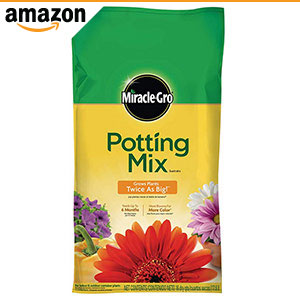Applying Fertilizers in SIP Planters
Proper application of fertilizers will ensure good plant growth and an abundant harvest. But how much should you use? How should it be applied? Should you be concerned about over-fertilization?
Fertilizer Application Rates
SURFACE AREA vs VOLUME: A retail fertilizer may have multiple sets of instructions depending on how it is used. Some instructions are based on surface area or plant rows. This is typically a lesser application rate when compared to container rates. Application rates that are based on volume are intended for container gardening. When compared to surface area rates, container rates can be more that 10 times greater in potency!
CONTAINER APPLICATION RATES: If you've decided to use a synthetic fertilizer, I advise using the lesser of any application rates. For organic nutrients, most vegetable plants can handle the larger (container) application method. In the case of the 3-4-4 organic fertilizer shown above, that means 2 cups of fertilizer per 1 cubic foot of mix. This really is quite a bit of fertilizer. I would consider this to be the upper threshold for an organic fertilizer that is in the range of 3-3-3 to 5-5-5.
To determine how much you would need, calculate volume based on the upper 12 inch portion of the SIP. Do not include the volume occupied by the reservoir. The larger application rate is good for a fresh batch of potting mix that does not have ANY nutrients in it yet. Don't do this if you already have a fertilized potting mix, such as Miracle Gro. After the 1st year, switching to a lesser application rate can minimize nutrient build-up. In the 4 foot x 8 foot box shown above, a total of 16 cups might be a good amount, without getting to the point of being wasteful. Whatever you decide, be sure to record what you've used and how it turned out!
Video: Easy Vegetable Fertilizer for Home Gardening in Containers & Wicking Planters
After years of testing I'm now able to demonstrate fertilizer rates for maintaining optimal plant health.General Fertilization Tips
WHEN? Ideally, your potting mix will already be pH adjusted before applying the fertilizer. If possible, add fertilizer a week before planting. Temporary pH fluctuations could occur so it is good to allow time for things to stabilize.
HOW? Mix fertilizer into the top 6 inches with a rake (or hand rake for small containers). No need to mix it in any deeper, especially if your planter is uncovered and in a rainy climate. The rainfall will tend to push the nutrients deeper into the potting mix. If you are using a high application rate, a portion of your fertilizer (33% - 66%) can be reserved and allocated to bands or strips. Gently water in the fertilizer to activate it.
FERTLIZER BANDS: Fertilizer bands are a secondary cache of nutrients that are supplied to the side of your plants. As the plants grow and mature their roots will be drawn to these nutrient strips forming a dense fibrous mass of feeder roots. This will extend your plant's nutrient supply often allowing it to grow to full maturity with no further supplementation.
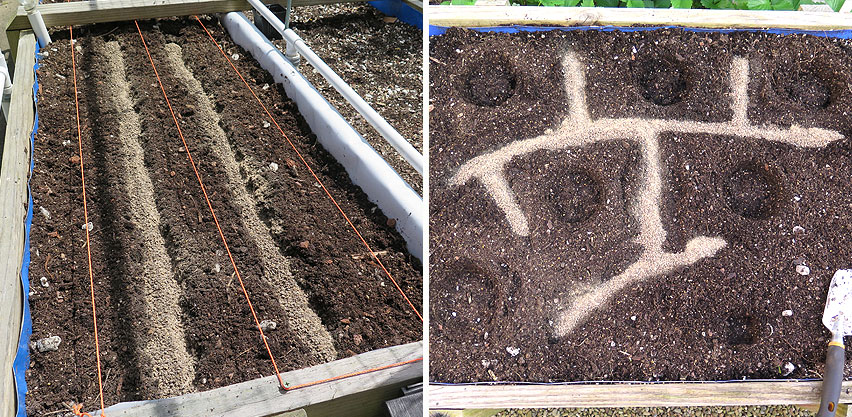
After applying fertilizer bands, you can direct sow some seed types or transplant seedlings.
Fertilizer strips can be set up when the rest of your fertilizer is mixed in. Or they can be added a week or two after transplanting your plants. It depends on proximity and plant size. Just try to add the bands before plant roots have reached that area.
Keep these bands 3 or more inches away from plant stems to avoid osmotic stress. With a hand trowel, dig a small trench about 3 inches deep. Pour in your fertilizer and press it down into the soil. Bury the strip 1 inch below soil surface, covering it over with potting mix. Osmotic pressure will cause temporary cracking above the strip, but don't worry. This is not an issue.
SEED GERMINATION: Most vegetable seeds will germinate in freshly fertilized mix. However, germination time may be increased due to osmotic pressure. It partly depends on seed type, on fertilizer application rates and on watering frequency. I've had great results with corn seeds in my SIPs even though the mix had high application rates of organic fertilizer. One crucial tip is to lightly water the soil surface each and every day until a few days after seeds emerge. Of course, seeds could also be pre-germinated ahead of time to avoid germination difficulties.
← Refreshing SIP Potting Mix: Year 2
Minimize Over-fertilization in SIPs →

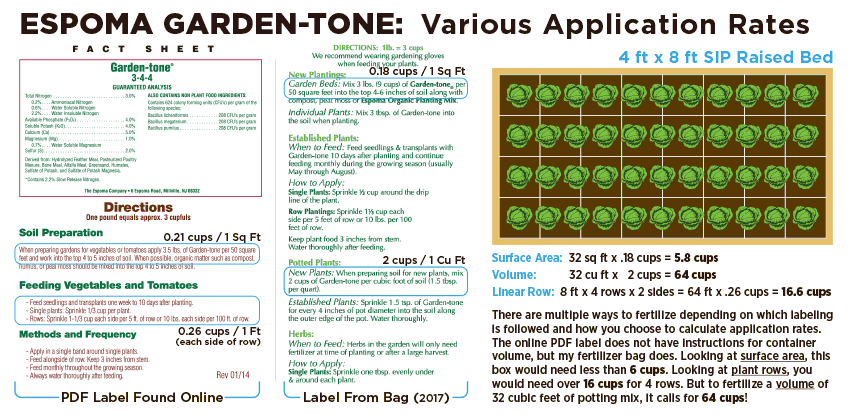


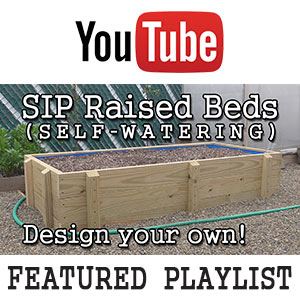
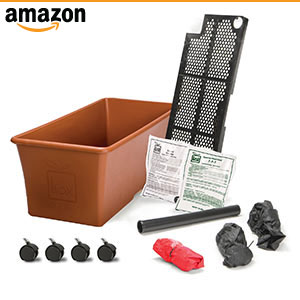
![Long Live PERENNIALS! [Gardening T-Shirt Design] Long Live PERENNIALS! [Gardening T-Shirt Design]](images/Long-Live-PERENNIALS-Gardening-T-Shirt-th.jpg)
